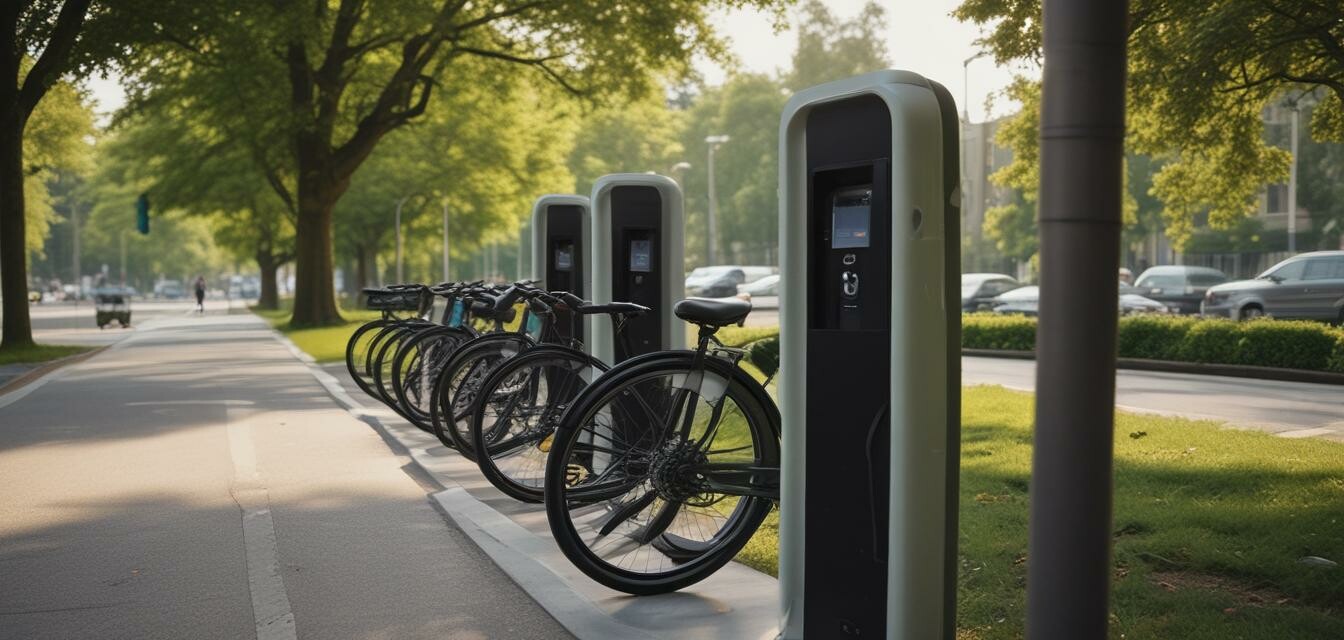
Trends in electric bike charging infrastructure
Key Takeaways
- The demand for electric bikes is increasing, necessitating more charging infrastructure.
- Urban settings are prioritizing the installation of charging stations to accommodate growing usage.
- Innovations in charging technology are making charging faster and more convenient.
- Collaboration between municipalities and private sectors is key to expanding charging infrastructure.
- Future developments may include solar-powered charging stations and mobile charging options.
Electric bikes are revolutionizing urban commuting, providing a sustainable alternative for transportation. As cities embrace these innovative bikes, it's vital to assess the current state and future of electric bike charging stations. In this article, we will explore the trends shaping electric bike charging infrastructure and how urban settings can better support the growing usage of electric bikes.
The current state of charging infrastructure
The electric bike market is booming, driven by the increased awareness of environmental sustainability and the convenience electric bikes provide. As demand surges, so does the necessity for adequate charging infrastructure in urban areas. Let's take a look at the current situation:
| Type of Charging Station | Locations | Charging Time |
|---|---|---|
| Public Charging Stations | Parks, bike lanes, shopping centers | 1 to 4 hours |
| Home Charging Stations | Residential properties | 4 to 8 hours |
| Fast Charging Stations | Central urban areas | 30 minutes to 1 hour |
Modern trends in electric bike charging
As we move forward, several trends are emerging in the electric bike charging infrastructure, including:
- Integration with Smart Technology: Many charging stations come equipped with smart technology that allows users to find charging locations, monitor availability, and make payments through mobile applications.
- Sustainability Initiatives: Cities are exploring environmentally friendly charging options, such as solar-powered charging stations that harness renewable energy.
- Expansion of Charging Networks: Collaboration between municipalities and private companies is crucial for ensuring an extensive network of charging stations across urban areas.
- Multi-use Facilities: Charging stations are increasingly co-locating with bike-sharing facilities, providing convenience for users.
- Mobile Charging Solutions: Some startups are developing mobile charging units that can be deployed to recharge bikes in various locations.
Benefits of improved charging infrastructure
Building a robust charging infrastructure offers numerous benefits for cities and riders alike:
- Encourages E-Bike Usage: More charging stations will likely lead to higher adoption rates of electric bikes.
- Reduces Range Anxiety: Well-placed charging stations can alleviate concerns about running out of power during rides.
- Promotes Sustainable Transportation: Easier access to charging facilities can encourage shifts from cars to electric bikes.
- Improved Urban Mobility: Expanding charging options can make urban environments more accessible and bike-friendly.
- Supports Local Businesses: Strategically placed charging stations can drive foot traffic to nearby shops and cafes.
Challenges to expanding electric bike charging infrastructure
Despite the numerous benefits, challenges remain in expanding electric bike charging infrastructure, including:
- Limited Funding: Many cities have budget constraints that may hinder the establishment of new charging stations.
- Space Constraints: Urban areas may struggle to find suitable locations for charging stations.
- Standardization Issues: With various types and models of electric bikes, establishing a universal charging standard can be complex.
- Infrastructure Technology: Continued advancements in battery and charging technology require stations to remain up-to-date, which can be resource-intensive.
Pros
- Boosts the use of electric bikes in urban settings.
- Enhances the convenience of commuting.
- Contributes to decreased carbon emissions.
- Improves the health of urban environments.
Cons
- Adequate funding is often difficult to secure.
- Limited space in urban areas for installation.
- Maintenance challenges for existing infrastructure.
The future of electric bike charging stations
The future outlook for electric bike charging infrastructure is optimistic. As urban cycling continues to gain popularity, cities are expected to invest in the following innovative solutions:
| Future Developments | Descriptions |
|---|---|
| Wireless Charging Technology | Emerging systems that allow electric bikes to charge without plugs, enhancing user convenience. |
| On-demand Mobile Charging Units | Service that brings charging stations directly to users as needed, expanding accessibility. |
| Integration with Public Transport | Providing charging at public transportation hubs to make multimodal travel easier. |
| Battery Swapping Stations | Offering an efficient alternative to traditional charging by allowing riders to exchange depleted batteries for charged ones. |
As urban areas continue to evolve, investing in electric bike charging infrastructure is essential for enhancing the riding experience and paving the way for greener commuting solutions. To stay informed about the latest trends and get expert tips on electric biking, check out our News & Trends section and explore our expert Buying Guides for better choices in cycling.
Conclusion
In conclusion, the trends in electric bike charging infrastructure are critical to supporting the expanding electric bike market in urban areas. By recognizing the benefits and barriers, cities can prioritize the development of a robust network of charging stations, thus further encouraging the adoption of electric bikes. As urban cycling continues to grow, so will the innovations in charging solutions, creating more accessible and sustainable commuting options for everyone.